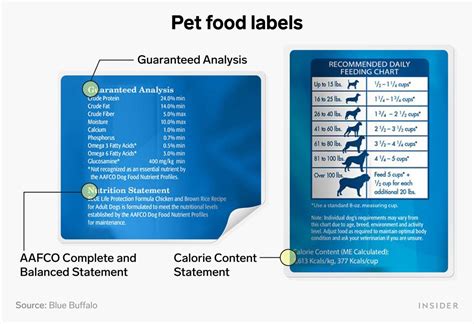Introduction

With increasing concerns about the environmental impact of pet food, consumers are becoming more conscious of the choices they make when feeding their furry friends. Reading pet food labels sustainably can help reduce your environmental footprint and support responsible pet ownership.
Why Matters
- Environmental Impact: Pet food production contributes to greenhouse gas emissions, water consumption, and waste generation. Sustainable pet food choices can mitigate these impacts.
- Health Implications: Choosing nutritious and sustainable pet food promotes the well-being of your pet while reducing the use of antibiotics and other potentially harmful ingredients.
- Ethical Considerations: Sustainable pet food companies prioritize animal welfare, worker safety, and the preservation of natural resources.
How to Read Pet Food Labels Sustainably
1. Ingredient Analysis:
- Look for Whole, Real Ingredients: Avoid foods with fillers like corn, wheat, or soy. Opt for whole meats, fruits, and vegetables.
- Assess Protein Source: Choose foods with high-quality protein sources, such as meat, fish, or poultry. Avoid by-products or low-quality ingredients.
- Check Fiber Content: Adequate fiber supports digestion and satiety. Look for foods with 4-8% fiber.
2. Nutritional Information:
- Calories and Serving Size: Determine the appropriate calorie intake for your pet’s size and activity level.
- Nutritional Value: Ensure the food meets the nutritional guidelines set by reputable organizations like the Association of American Feed Control Officials (AAFCO).
- Additives and Preservatives: Choose foods with minimal artificial additives and preservatives. Look for natural antioxidants, such as vitamin E.
3. Environmental Considerations:
- Packaging: Opt for recyclable or biodegradable packaging. Avoid plastic bags or containers that contribute to pollution.
- Carbon Footprint: Consider the carbon footprint of the food’s production and transportation. Choose local or environmentally certified brands.
- Certifications: Look for certifications from organizations like the Sustainable Agriculture Network (SAN) or the Marine Stewardship Council (MSC).
4. Ethical Considerations:
- Animal Welfare: Choose brands that prioritize the ethical treatment of animals in their supply chain.
- Worker Safety: Support companies that ensure the safety and well-being of their employees.
- Fair Trade: Consider fair trade products that support sustainable farming practices and equitable wages for workers.
5. Other Factors:
- Price: Sustainable pet food can vary in price. Consider the value it provides in terms of quality, environmental impact, and health benefits.
- Availability: Check the availability of sustainable pet food options in your local stores or online retailers.
- Support Local Brands: Supporting local pet food companies reduces transportation emissions and promotes local businesses.
Comparison Table
| Factor | Sustainable | Conventional |
|---|---|---|
| Ingredients | Whole, real | Fillers, by-products |
| Nutrition | AAFCO-approved | May fall short |
| Packaging | Recyclable, biodegradable | Plastic bags, containers |
| Carbon Footprint | Low | Moderate to high |
| Certifications | SAN, MSC | May not have |
| Animal Welfare | High priority | May not prioritize |
| Worker Safety | Ensured | May not be emphasized |
| Fair Trade | Supported | May not be available |
Effective Strategies for Sustainable Pet Food Consumption
- Research: Educate yourself about sustainable pet food options and compare different brands.
- Choose High-Quality Ingredients: Prioritize whole, natural ingredients that promote pet health and reduce environmental impact.
- Consider Packaging: Opt for eco-friendly packaging solutions to minimize waste.
- Support Ethical Brands: Choose companies that prioritize animal welfare, worker safety, and fair trade practices.
- Buy Local: Reduce transportation emissions and support local businesses by purchasing pet food from local brands.
Reviews
- “Sustainable pet food gives me peace of mind, knowing that I’m feeding my pet a nutritious diet while protecting the environment.” – Sally, pet owner
- “The transparency and ethical practices of sustainable pet food companies are truly commendable.” – Mark, animal lover
- “By choosing sustainable pet food, I’m not only taking care of my dog’s health but also contributing to a better future for the planet.” – Sarah, environmentalist
- “The difference in ingredient quality and nutrition is noticeable. My pet is healthier and more energetic since switching to a sustainable diet.” – John, pet parent
Highlights of Sustainable Pet Food Consumption
- Promotes pet health and well-being
- Reduces environmental impact
- Supports ethical business practices
- Contributes to a sustainable future
Case Detail: The Rise of Sustainable Pet Food
The demand for sustainable pet food has surged in recent years as consumers become more aware of the environmental and ethical implications of conventional pet food production. By 2025, the global sustainable pet food market is projected to reach $13.5 billion. This growth is driven by increasing consumer demand for high-quality, ethically sourced pet food that aligns with their values.
Conclusion
Reading pet food labels sustainably is a crucial step towards reducing your environmental footprint, promoting animal welfare, and supporting responsible pet ownership. By considering the factors outlined above, you can make informed choices that support both your pet’s health and the planet’s well-being. Together, we can create a more sustainable future for our beloved companions and the environment they share with us.





















